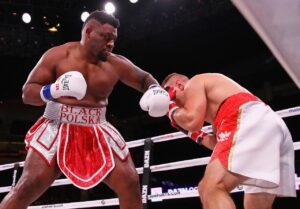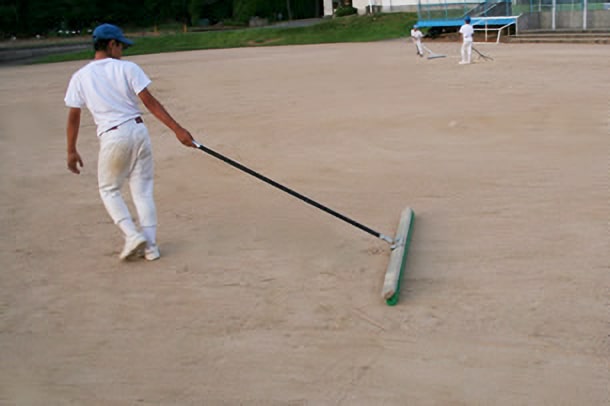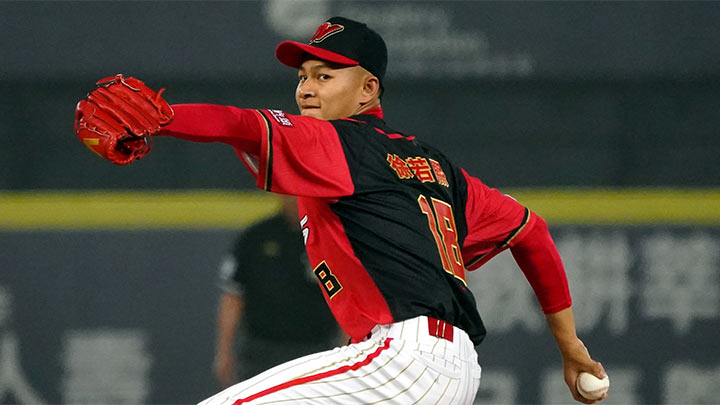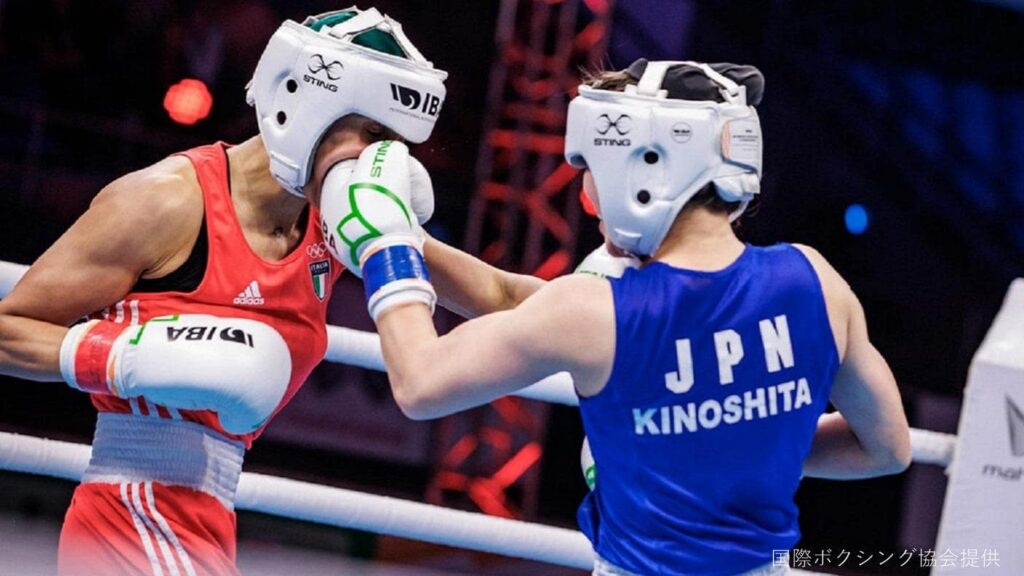
Improving your boxing skills is an important goal for all boxers, from beginners to advanced boxers.
In this article, we will take a deep dive into the list of techniques (techniques) in boxing and specific methods and training to improve your boxing techniques.
Learning and practicing proper technique is essential if you want to improve your performance in the ring.
So, let’s take the first step in deepening our knowledge of boxing techniques and applying them to our own training.
目次
A complete guide to boxing techniques
Boxing is a sport that requires not only strength and speed, but also precise technique and strategy. This guide covers everything from basic boxing techniques to advanced techniques, and provides information that will help you improve your skills. Now, let’s take a look at the knowledge and training secrets you need to improve your boxing skills.
1. Basic posture and footwork
- The importance of basic posture : Starting with the right posture is essential to success in boxing. A stable stance is the basis of defense and attack.
- How to improve your footwork : Introducing the basics of footwork and advanced practice methods to help you move quickly and accurately.
2. The secret of the jab
- Jab Basics : The jab is the most basic punch in boxing. Learn how to hit it and how to use it depending on the situation.
- Combinations that make the most of your jab : Master various punch combinations that start with a jab.
3. Straight hook uppercut
- How to throw a power punch : We’ll explain the technical aspects of each punch and tips on how to throw them effectively.
- Combination Application : Increase your attack variety and overwhelm your opponent by combining multiple punches.
4. Defense technology
- Blocks and Parries : Covers basic ways to block attacks to more advanced techniques.
- Learn avoidance moves : Learn techniques to avoid blows, such as bob and weave and slips.
5. Conditioning and mental health
- Training for physical strength : Provides effective training methods to improve your physical strength as a boxer.
- The secret to mental strength : Explore psychological approaches to developing overwhelming confidence and concentration.
6. Strategy and game play
- Read your opponent : How to strategically predict your opponent’s movements and advance the match to your advantage.
- Adaptation during the match : Explains the importance of changing your style and strategy depending on the situation.
We hope that through this guide you will be able to deepen your understanding of boxing techniques and increase your motivation for training.
Boxing is a sport where not only technical aspects but also mental and strategic aspects are extremely important. Make sure you always look into the game in the best possible condition.

Basic techniques of boxing
The first step to success in boxing is learning the basic techniques.
Correct form and technique are essential to delivering a powerful punch.
Here we will explain how to throw jabs and straight punches, which are the basics of boxing.
How to hit the jab and tips
The jab is one of the most basic and important punches in boxing. Their combination of speed, accuracy, and unpredictability allows them to not only inflict damage on their opponents, but also to defend or prepare for other attacks.
- Basic form : Stand with your left foot in front of you (if you’re right-handed) with your knees slightly bent. Guard both hands in front of your face, and keep your right hand (rear hand) in a position to protect your chin. When throwing a jab, simultaneously extend your left hand forward at the same time as the toes of your front foot (left foot) and punch towards your opponent in a fast, straight line.
- Tip : Relax your shoulders and prioritize speed when delivering the jab. Twist your wrist at the end of the punch to transmit more force. When returning, follow the same path and quickly return your hands to their original position to maintain a defensive position.
How to effectively use a straight punch
A straight punch is a powerful blow followed by a jab, aimed precisely at the opponent’s face or torso. Straights are used to close the distance or break through the opponent’s defense.
- Basic Form : Use your rear hand (right hand) when throwing a straight punch. At the moment you release the punch, press the toes of your back foot (right foot) into the ground, rotate your hips, shift your weight forward, and forcefully extend your right hand forward.
- Tip : To maximize power transmission, it is important to synchronize the rotation of the hips and the movement of the hands at the moment of punching. Make your target point clear and throw the punch in a straight line and quickly. After punching, quickly return to your original defensive stance and prepare for your next move.
These basic techniques form the basis of boxing.
Through practice and proper form and technique, your performance in the ring will greatly improve.
During training, it is important to practice these techniques repeatedly and apply them in various combinations.

Applied technology and combination
Applied techniques and combinations are essential to further develop your boxing skills and gain an advantage in the ring.
By making full use of these, you will be able to increase the variety and unpredictability of your attacks and be able to toy with your opponent.
Here, we will introduce basic combination patterns and applied techniques in actual combat.
Basic pattern of combination
A combination is a combination of multiple punches thrown in succession. This tactic allows you to break your opponent’s guard and increase your chances of landing an effective blow.
- Jab – Straight : The most basic combination. Get the opponent’s attention with a jab and then deliver a straight blow.
- Jab – Hook : Use a jab to close the distance, then use a hook to attack from the side. Effective when the side guard is weak.
- Double Jab – Straight : Launch two jabs in succession to restrict the opponent’s movement, then aim for a decisive blow with a straight.
These basic patterns can be applied and expanded upon in a variety of war situations.
In practice, it is important to be able to perform these combinations smoothly and develop them into more advanced forms.
Applied techniques in actual combat
In a real fight, you don’t just need to throw punches repeatedly, you need to read your opponent’s movements and choose the right combination at the right time.
- Counter attack : A technique to counterattack while dodging an opponent’s attack. A counter straight after slipping is effective against your opponent’s jab.
- Attack to the body : Feint upwards and then punch to the body to lure the opponent’s guard and break down their defense.
- Breaking out of a clinch : Effectively breaking out of a clinch and regaining distance before attacking can change the course of a match.
These applied techniques can be learned through practical experience and practice.
Frequent sparring and trying out these techniques in a variety of situations is a shortcut to improving your ability.
Also, the key to success in boxing is to constantly analyze your opponent’s tactics and movements and learn applied techniques that suit your own style.

How to practice boxing techniques
In order to improve your boxing skills, it is important to incorporate effective training methods.
This article will focus on exercises to increase your punching power and accuracy, as well as ways to improve your defensive techniques.
Efficient punch practice method
In order to improve the efficiency of your punches, you need to train accuracy, speed, and power in a well-balanced manner.
- Shadow Boxing : Shadow boxing in front of a mirror to check your form and correct posture and punching motion. Develop a sense of rhythm with an emphasis on speed and fluid movement.
- Heavy bag training : Practicing with a heavy bag is great for increasing the power of your punches. Improve your striking power and endurance by punching the bag from various angles and delivering powerful blows in succession.
- Speed bag training : Speed bags help develop hand speed and timing. Improve your reflexes and hand speed by throwing punches in succession while finding a rhythm.
How to improve your defense techniques
Defense techniques are just as important in boxing as offensive techniques.
By defending well, you can nullify your opponent’s attacks and create counter opportunities.
- Practicing slips and weaves : Slips (the action of dodging your opponent’s punch by leaning your body) and weaves (the action of avoiding the opponent’s punch by moving your upper body from side to side) are basic defensive movements for avoiding blows. Practice these movements regularly to improve your reaction speed and flexibility.
- Parrying and blocking : By practicing techniques such as parrying (parrying) and guarding (blocking), you can increase your defensive options. Use these techniques in practice with a partner to improve your ability to apply them in real life.
- Strengthen your footwork : Effective footwork is essential not only to avoid attacks, but also to gain advantageous positioning. Train your foot speed and accuracy with rope and ladder drills to improve your freedom of movement around the ring.
By incorporating these exercises, you can improve your overall level of boxing technique.
Implement these exercises in your daily training.

Advanced techniques in boxing
In boxing, there are many advanced techniques that go beyond basic techniques.
By mastering these techniques, fighters will be able to deploy more diverse tactics in the ring and launch unpredictable attacks on their opponents.
Below are some advanced techniques in boxing and a brief explanation of them.
feint
- Explanation : A technique of showing fake movements in order to deceive the opponent. Pretend to throw a punch to elicit a reaction from your opponent and gain an advantageous position for the actual attack.
Angling
- Explanation : A technique of moving out of the opponent’s attack line and attacking from an advantageous angle. Use footwork and body rotation to get around to the sides or behind the opponent.
body shot
- Description : A blow to the opponent’s abdomen or ribs rather than the upper body. It is effective against opponents with strong defenses, and in the long run it will deplete your physical strength faster.
clinch
- Explanation : A tactic that involves closely grappling with the opponent and temporarily stopping their attack. Used to reset a disadvantageous situation or disrupt the pace of the opponent’s attack.
counter punch
- Description : A technique that allows you to instantly counterattack immediately after avoiding or blocking an opponent’s attack. High timing ability and quick reaction speed are required.
slip
- Explanation : A technique to dodge an opponent’s punch by leaning your body. Efficiently avoid attacks with small movements and create opportunities for counterattacks.
Rolling (Bob & Weave)
- Explanation : A technique to avoid an opponent’s punch by lowering the upper body and making evasive movements back and forth or left and right. Effective for avoiding hooks and uppercuts.
parry
- Explanation : A technique of dodging an opponent’s punch by lightly hitting it with your hand or arm and changing its trajectory. How to defend without wasting energy.
flicker jab
- Description : A light jab that is fired in rapid succession from below towards the face using the bend of the wrist. It is used to disrupt the opponent’s concentration and create an opening.
Corkscrew blow (corkscrew punch)
- Explanation : A technique that increases the power of the punch by rotating the fist during the final stage of the punch. The name comes from the corkscrew.
slipping away
- Explanation : A technique that allows you to evade or reduce the power of a punch by moving your body sideways or rotating your head in the direction of the punch. Watch for opportunities to counterattack while moving.
shoulder block
- Explanation : A technique that uses the shoulders to block an opponent’s punch. Absorb the force of the punch with your shoulders, reducing damage.
elbow block
- Explanation : A technique that uses the elbow of the arm to block punches (such as uppercuts and body blows), especially those coming from below.
These advanced techniques can be gradually acquired through boxing practice and experience.
Practicing each technique individually and actively applying it in sparring and competition is the key to mastering these techniques.
Athletes who want to take their boxing skills to the next level are encouraged to take note of these advanced techniques and incorporate them into their training.





